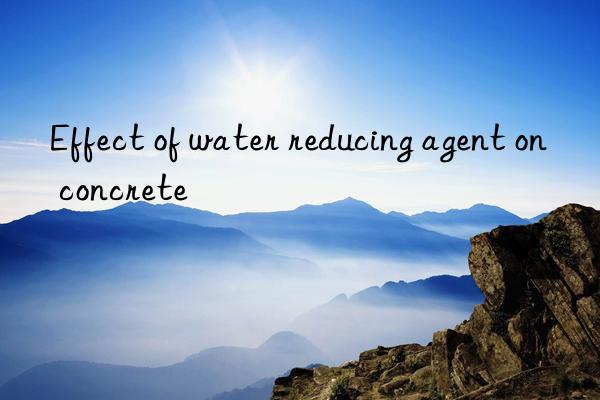
Concrete shrinkage refers to the economic fluctuation volume change caused by internal or external temperature changes, exothermic reactions and other factors. When shrinkage causes shearing forces exceeding the concrete itself in the event of interference, When the tensile limit is exceeded, it is easy to cause cracks, accelerate the intrusion of various hazardous substances, and seriously affect the performance of the concrete.
In terms of reducing the dry shrinkage of concrete, polycarboxylate water-reducing agents are much more attractive than traditional naphthalene-based water-reducing agents. Concrete mixed with polycarboxylic acid water-reducing agents Compared with concrete mixed with naphthalene-based superplasticizer, the dry shrinkage is reduced by about 30%, which is only equal to the manual shrinkage of standard concrete by about 90%, which is very beneficial to the performance of concrete.
For cement mortar with low water-cement ratio, the self-shrinkage rate after adding polycarboxylate water-reducing agent is significantly smaller than that adding naphthalene-based water-reducing agent. Cement mortar body. Under the same preparation standards, the self-shrinkage rate of 90d concrete is reduced by approximately 30%. After the polycarboxylate superplasticizer is produced into concrete, it can significantly reduce the capillary interfacial tension of the concrete, thereby reducing the drying yield of the concrete.
As the age increases, the strength of concrete increases and its ability to resist deformation increases. On the other hand, the addition of polycarboxylic acid graft prepolymer improves the pore structure of hard-primed cement mortar, thereby changing the mathematically bound water in the gap, effectively suppressing or reducing the biological shrinkage of concrete. produce. Polycarboxylic acid has the function of reducing interfacial tension. Under the same absorbance conditions of saturated solution, its reduction potential can be close to that of concrete water-reducing agent. Reduce capillary water pressure. In the very low absorbance range, the interfacial tension of the slurry is maintained. Even if the water reducing agent is absorbed a lot. Since the development of concrete hydration causes the free water in the mortar to decrease, relatively speaking, the absorbency of the water-reducing agent can also maintain the interfacial tension of the slurry at any time, thereby reducing the dryness and shrinkage of the concrete.
Concrete is a large-porous, multi-phase, non-organic complex structure in all directions. Many properties of concrete are related to the structure of the gap volume between the two to a certain extent and hydrophilicity. Environmental factors cause mathematical and biological corrosion of concrete structures from the surface. Therefore, the hydrophilicity of concrete is the first line of defense for any mathematical and biological destruction process. To investigate the impact of water-reducing agents on the performance properties of concrete, the key is to investigate its waterproofing properties, and carbonization properties and chloride ion diffusion are the most direct reflections of waterproofing properties.
It has been concluded from many experiments that although the amount of polycarboxylate water-reducing agent concrete is relatively small, compared with the same industry, the polycarboxylate water-reducing agent concrete has the best performance. Carboxylic acid superplasticizer has slightly better spreading properties, especially when there are mineral admixtures, the advantages are more obvious.
The carbonization characteristics of polycarboxylate superplasticizers have been improved to a certain extent compared with similar foreign products and naphthalene series high-efficiency superplasticizers. After adding polycarboxylate water-reducing agent, the water demand of concrete is drastically reduced, which has a beneficial effect on the shape of concrete hydration material and makes the concrete structure denser. In terms of physical properties, especially the tensile strength is greatly improved, the CO2 penetration potential is reduced, and the carbonization depth is also reduced.
In general: Polycarboxylate high-efficiency water-reducing agent not only has a low dosage, but also has good effects and is effective in the third industry. There are often excellent improvements in workability and other aspects, and it has better effects than traditional naphthalene-based water reducing agents.
</p

 微信扫一扫打赏
微信扫一扫打赏

